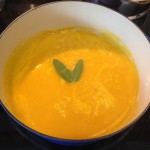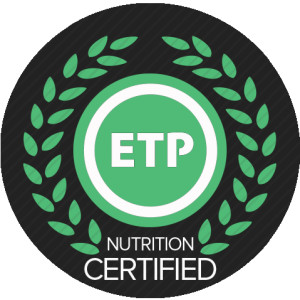 The joys of summer. Beach trips, spending all day outside, warm weather, and more daylight. The downside is that here in North Carolina, summer is no joke. We are regularly in the 90s by 10AM, and can expect the heat to rise over the next two months. That doesn’t mean that we hibernate with the A/C cranked all summer. It just means that we need to be conscious, and some days, careful about getting out to enjoy the day, and our favorite activities. So what’re my best tricks for thriving in the sun drenched summer?
The joys of summer. Beach trips, spending all day outside, warm weather, and more daylight. The downside is that here in North Carolina, summer is no joke. We are regularly in the 90s by 10AM, and can expect the heat to rise over the next two months. That doesn’t mean that we hibernate with the A/C cranked all summer. It just means that we need to be conscious, and some days, careful about getting out to enjoy the day, and our favorite activities. So what’re my best tricks for thriving in the sun drenched summer?
Timing
Typically, the suns rays are the strongest from 10AM-4PM. This is when we see the strongest penetration of UV rays, as well as the highest risk for heat stroke, sunburn, and dehydration. If you have the opportunity, it’s highly recommended to get outside before or after this window, to lower your risk. No matter what time you get outside, there are some simple strategies to keeping you and your loved ones (including your pets) safe and enjoying the sunshine.
Sunscreen
It is recommended that you put on sunscreen 30 minutes before sun exposure, and then reapply every 2 hours that you’re outside to successfully protect your skin from damage, and minimize the risks of skin cancer . The downside of this is that many sunscreen contains toxins, such as parabens, that you may want to avoid. Head on over to the EWG to see the safest sunscreens for your skin, and your health. Two of my favorites are 100% Pure sunscreen, and California baby. The next problem is that wearing sunscreen blocks absorption of vitamin D, which is vital for optimal health (including cancer prevention). It’s important to manage getting healthy levels of vitamin D, with the protective benefits for your skin. It’s recommended that you have 20 minutes of unprotected sun exposure to allow your body to absorb vitamin D.
One way to give your skin some extra protection, without layering on sunscreen 5 times a day, is to eat foods that have protective qualities for your skin. As a nutritionist, I regularly “eat” my sunscreen. Foods that contain carotenoids such as lycopene, help protect your skin from the inside out. Foods that contain the highest amounts of this nutrient, are tomatoes, watermelon, guavas, papaya, and grapefruit.
One of my favorite ways to get in some “internal sunscreen” is to mix watermelon, mint, and some lime into a blender, or juice it. It’s such a refreshing (and hydrating) summertime treat, with amazing benefits!
is to mix watermelon, mint, and some lime into a blender, or juice it. It’s such a refreshing (and hydrating) summertime treat, with amazing benefits!
Other foods that are shown to have skin saving benefits are pomegranates, and foods containing omega 3s (think salmon, flax, and walnuts). Even dark chocolate is shown to help protect skin, with it’s high antioxidant content.
Hydration
One of the most common issues in the heat of summer, and one that can have serious repercussions, is dehydration. While this can happen any time of year, it happens most often, and more quickly, in the heat.
The general rule for basic hydration, just to sustain life functions, is 1/2 of your body weight in water, a day. If you workout, you should go into your sessions well hydrated, and continue to hydrate throughout. Since heat exhaustion and heat stroke can occur when the mercury rises, care should be taken to slow down or stop your workouts, if you are experiencing the signs of heat exhaustion/stroke. The other great thing about the fruits mentioned above for internal sunscreen, is that they are also high water content foods. While drinking water is key to staying lubricated, eating water rich foods (while lessening sugars and processed foods, which dehydrate you), will help to ensure optimal hydration levels.
When the temperatures rise, so does the sweat factor. Besides just losing water, our deplete our electrolytes as we sweat. Calcium, Sodium and Potassium are responsible for vital bodily functions; including nerve and muscle function, blood PH, and blood pressure. Depletion or imbalanced levels can cause muscle weakness, cramping, as well as hyponatremia.
If you’ll be out for long periods of time, or working out in the heat, I suggest having something to help replenish your electrolytes. Most sports drinks will provide this, my favorite being skratch labs and nuun products (but everyone is different, so try some out). You can also get capsules, such as Hammer nutrition’s Endurolytes, if you prefer that method.
I also make a simple homemade electrolyte drink that can be changed up with different citrus fruits, some ginger, or even a dash of cayenne.
Clothing and Shade
So many clothes now, are made with SPF built into them. While this is great and provides additional protection, putting on a layer when you’ll be out in the sun, is beneficial also. Minimizing the direct contact the sun has with your skin, will decrease the chance of skin damage *that includes decreases the signs of aging too!). Another great way to avoid damage, and still enjoy being outside, is to find some shade whenever possible. It seems like common sense, but you’d be surprised at how often people don’t think to move their activity under a tree, or to bring a popup tent or sun umbrella, if they’ll be out all day. A nice large brim sunhat is also a fantastic way to carry some shade with you!
These are simple, inexpensive ways to enjoy your time outdoors, during the hottest months of the year. Who has some other great ideas?








